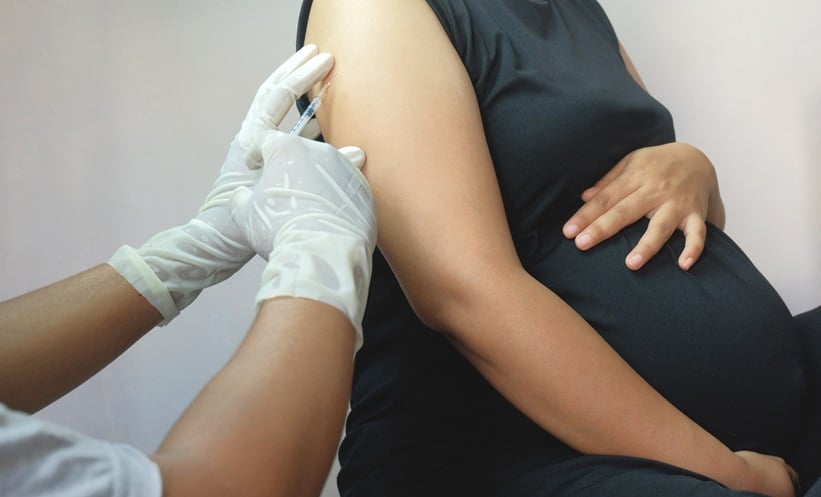Author: Katie Wright, EMJ, London, UK
Citation: EMJ Repro Health. 2025;11[1]:27-31. https://doi.org/10.33590/emjreprohealth/BLLO7772
![]()
THIS YEAR marked the 41st Annual Meeting of the European Society of Human Reproduction and Embryology (ESHRE), held from 29th June–2nd July, in Paris, France. It brought together leading experts and clinicians from around the world to discuss groundbreaking developments in human reproduction and embryology. One key interdisciplinary focused session, titled ‘Incorporating Artificial Intelligence in Clinical Practice – Are We There Yet?’,1 featured presentations from Ariel Hourvitz, Assaf-Harofeh Medical Center, Be’er Ya’akov, Israel; and Eduardo Hariton, University of California San Francisco (UCSF), USA. They discussed the implementation of AI in assisted reproductive technology and its role in streamlining the workflow of fertility treatments, as well as how AI can be leveraged to enhance ovarian stimulation.
INTRODUCTION
In his talk, ‘Implementation of Artificial Intelligence (AI) in ART and Streamlining the Workflow of Fertility Treatments using AI’, Hourvitz outlined how AI technologies are already beginning to optimise the complex processes involved in fertility treatment, particularly in procedures such as IVF. By enabling the analysis of large and complex datasets, AI has the potential to support more precise, standardised, and cost-effective clinical decision-making; however, Hourvitz also highlighted a number of challenges that must be addressed for AI to be implemented responsibly. These include difficulties with data acquisition, the limited standardisation of electronic medical records, concerns around data privacy and security, and the absence of clear regulatory frameworks in many contexts.
There is also an ongoing risk that excessive dependence on AI could undermine clinicians’ decision-making skills and reduce the essential human element of patient care. Nevertheless, AI applications are already being employed across almost every stage of fertility treatment, from diagnosis and prognostic modelling to treatment planning and workload allocation. Although this is the case, Hourvitz emphasised that AI should be viewed as an adjunct to clinical expertise, enhancing evidence-based practice while preserving the empathy and professional judgement that remain central to high-quality reproductive care.
OPTIMISING TRIGGER TIMING AND NATURAL CYCLE MANAGEMENT USING AI IN IVF
Determining the optimal timing for ovulation trigger during controlled ovarian stimulation remains one of the most subjective and debated aspects of IVF treatment, with significant variation observed between clinicians and practices globally. Differences in clinical approaches, notably between Europe and the USA, reflect this ongoing uncertainty. For example, European clinics often wait for larger follicle sizes before triggering ovulation, whereas clinics in the USA may proceed at smaller sizes. Given the crucial impact of trigger timing on treatment outcomes, this area has attracted considerable research interest, with numerous studies aiming to define the ideal day for ovulation induction.
AI-SUPPORTED DECISION-MAKING IN TRIGGER TIMING
Hourvitz and colleagues recently demonstrated how AI can be utilised to support trigger timing decisions.2 Their team developed a machine learning model based on the XGBoost algorithm, trained on a large dataset of approximately 10,000 antagonist IVF cycles from a single centre.2 The model incorporated clinical and laboratory parameters, including patient age, BMI, stimulation protocol, cycle day, hormonal profiles, and ultrasound follicular measurements. Notably, follicle count, serum oestradiol levels, and mid-size follicles measuring 14–16 mm emerged as the most influential predictive factors.2,3
PREDICTIVE ACCURACY AND CLINICAL IMPACT
The model showed strong predictive performance, with R2 values of 0.81, 0.73, and 0.69 for trigger decisions on the same day, the following day, and after 2 days, respectively.2 However, Hourvitz emphasised that accuracy metrics alone are insufficient; the clinical relevance is determined by whether AI-driven recommendations translate into improved patient outcomes.
To evaluate this, cycles where the clinician’s trigger decision aligned with the algorithm’s recommendation (‘concordant’ group) were compared against cycles with discordant decisions. The concordant group yielded a significantly higher mean oocyte retrieval (12.3 versus 8.7), equating to an additional 3.6 oocytes and nearly one more blastocyst per cycle.2 This finding reinforces the tangible benefits of AI-informed trigger timing in maximising IVF success.
Further validation was performed in a multi-centre setting involving IVF units across Europe, Asia, and the USA, with the model expanded to cover all stimulation protocols beyond antagonists.4 These efforts confirmed consistent performance across diverse populations and treatment regimens, supporting the algorithm’s generalisability.4
AI IN NATURAL CYCLE OVULATION PREDICTION
Extending beyond stimulated cycles, Hourvitz’s team developed an AI-driven ovulation prediction tool for managing natural cycles.5 This model aids in timing frozen embryo transfers, intrauterine insemination, and timed intercourse. Applications are particularly valuable for general obstetricians and gynaecologists less familiar with fertility protocols.
The model was trained on 500 natural cycles featuring detailed hormonal and ultrasound monitoring. Validation was performed using two datasets: one based on ovulation dates determined by consensus among fertility experts, and another based on objective criteria, including a luteinising hormone surge followed by documented follicular collapse. The XGBoost model achieved 93% accuracy in predicting ovulation timing in both datasets.5
Clinical outcome analysis again revealed that concordance between clinical decisions and AI predictions corresponded with superior results, affirming the algorithm’s utility in natural cycle management.
FUTURE PERSPECTIVES AND CLINICAL INTEGRATION
Hourvitz’s presentation illustrated the promising role of AI in enhancing clinical decision-making in fertility treatment. Despite challenges such as data quality, interpretability, and integration into clinical workflows, machine learning offers precise, evidence-based guidance that can improve treatment outcomes.
Ongoing prospective RCTs are underway to validate the safety and effectiveness of AI-driven protocols. Ultimately, the vision is a fully integrated AI-managed IVF cycle encompassing both clinical and laboratory processes. Hourvitz concluded with a quote originally stated by Antonio Di Leva, University of Turin, Italy: “Machines will not replace physicians, but physicians using AI will soon replace those not using it.” This signals a paradigm shift in reproductive medicine.
INTEGRATING AI FOR ENHANCED IVF OUTCOMES
Following Hourvitz’s discussion, Hariton took the stage to explore the transformative potential of AI, shifting focus to its practical applications in optimising ovarian stimulation and streamlining clinical workflow. Hariton highlighted the urgent need for AI-driven solutions given the rapidly changing fertility landscape, marked by increasing patient demand, a shortage of trained fertility specialists, and lengthy wait times globally. He noted how AI in reproductive medicine, though still an early field, is crucial for improving outcomes and operational efficiency within increasingly consolidated clinic networks.
PERSONALISED OUTCOME PREDICTION FOR PATIENT COUNSELLING
Hariton spotlighted the critical role of AI in outcome prediction and patient prognostication. He noted that physicians often carry inherent biases, such as availability bias, which can subjectively influence their treatment decisions. Patients, however, seek highly personalised expectations, not just general statistics, to prepare emotionally and financially for treatment.
To address this, Hariton showcased the AI Pathway to Parenthood™ tool (US Fertility LLC, Rockville, Maryland, USA), a model that harnessed 8 years of data, encompassing millions of patient data points and over 100,000 cycles, to provide precise, personalised predictions for IVF, intrauterine insemination, and egg freezing. The tool integrates clinical parameters like age, diagnosis, ovarian reserve, and BMI to identify similar patients and predict individual success rates. This expectation-setting proved invaluable for patients and was hypothesised to reduce dropout rates, as even those with insurance coverage often disengage due to emotional distress rather than financial constraints.
OPTIMISING OVARIAN STIMULATION DOSING
Addressing the significant subjectivity in gonadotropin dosing, which varies widely across continents and even within clinics, Hariton presented how AI can standardise this crucial step. He referenced a study by Fanton et al.6 that developed a patient-specific, interpretable model to optimise the starting dose of follicle-stimulating hormone (FSH). This model, trained on nearly 20,000 cycles, identified patients as either dose-responsive (where oocyte yield changes with dose; approximately 30%) or flat-responsive (where yield is consistent across a range of doses; about 64%).
For dose-responsive individuals, optimal AI-guided dosing resulted in more mature oocytes and blastocysts with a slightly lower total FSH dose. For those who were flat-responsive, AI allowed for significantly lower medication doses (e.g., 1,375 units less per cycle) with similar outcomes, leading to substantial cost savings without compromising success.6
ENHANCING FOLLICULAR MONITORING AND TRIGGER OPTIMISATION
Hariton briefly touched upon advancements in follicular monitoring, highlighting AI’s ability to automate 3D ovarian sweeps and accurately measure follicles. This technology promises to improve geographic access by enabling remote ultrasounds and even patient self-administered home scans, as demonstrated by a study that showed equivalent accuracy and higher patient satisfaction.7 This also allows for faster monitoring by less trained personnel and standardises accuracy, which is crucial for feeding precise data into AI models.
Revisiting trigger optimisation, Hariton detailed his own thesis project, an early AI study that used causal inference models to predict the optimal trigger time. By analysing over a decade of patient data, his model predicted an average gain of 1.4 more fertilised eggs (eggs with two pronuclei) and approximately 0.5 more blastocysts per cycle when clinicians followed AI recommendations. He noted that, while doctors often made the right decision, there was a significant “purple zone” where AI could improve outcomes. Subsequent real-world studies, like one involving two senior reproductive endocrinologists using a tool called Stim Assist™ (Alife Health Inc., San Francisco, California, USA), further confirmed AI’s acceptability and integration into practice, showing maintained oocyte counts with reduced FSH doses and no increased risk of ovarian hyperstimulation.8
STREAMLINING WORKFLOW AND FUTURE OUTLOOK
Hariton echoed Hourvitz’s findings on workload balancing, emphasising that AI can help labs manage not just the number of retrievals, but the actual anticipated workload in terms of oocytes and blastocysts. Building on this, he noted that such insights allow clinics to smooth out busy days, reducing instances of operating over capacity from, for example, 32 times a year to just nine.
In his concluding remarks, Hariton stressed the need to separate AI excitement from reality. He called for continued investment in peer-reviewed validation (both internal and external) and a clear business case for AI, focusing on how these tools can drive operational efficiency, improve patient outcomes, and potentially reduce costs for the entire healthcare system rather than simply adding expenses. Ultimately, AI holds immense potential to transform the IVF clinic and embryology lab, enhancing decision support and refining reproductive medicine practices.







